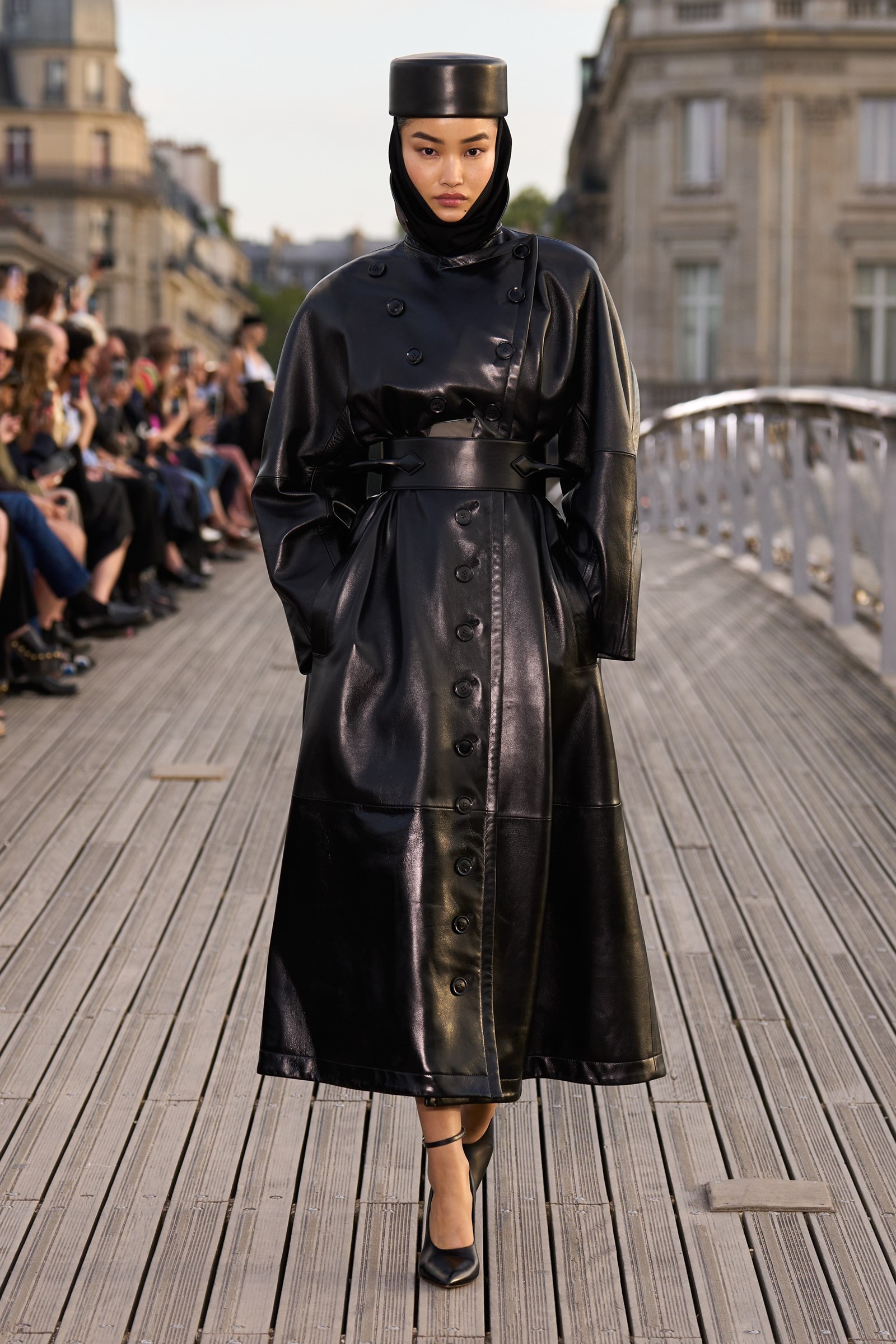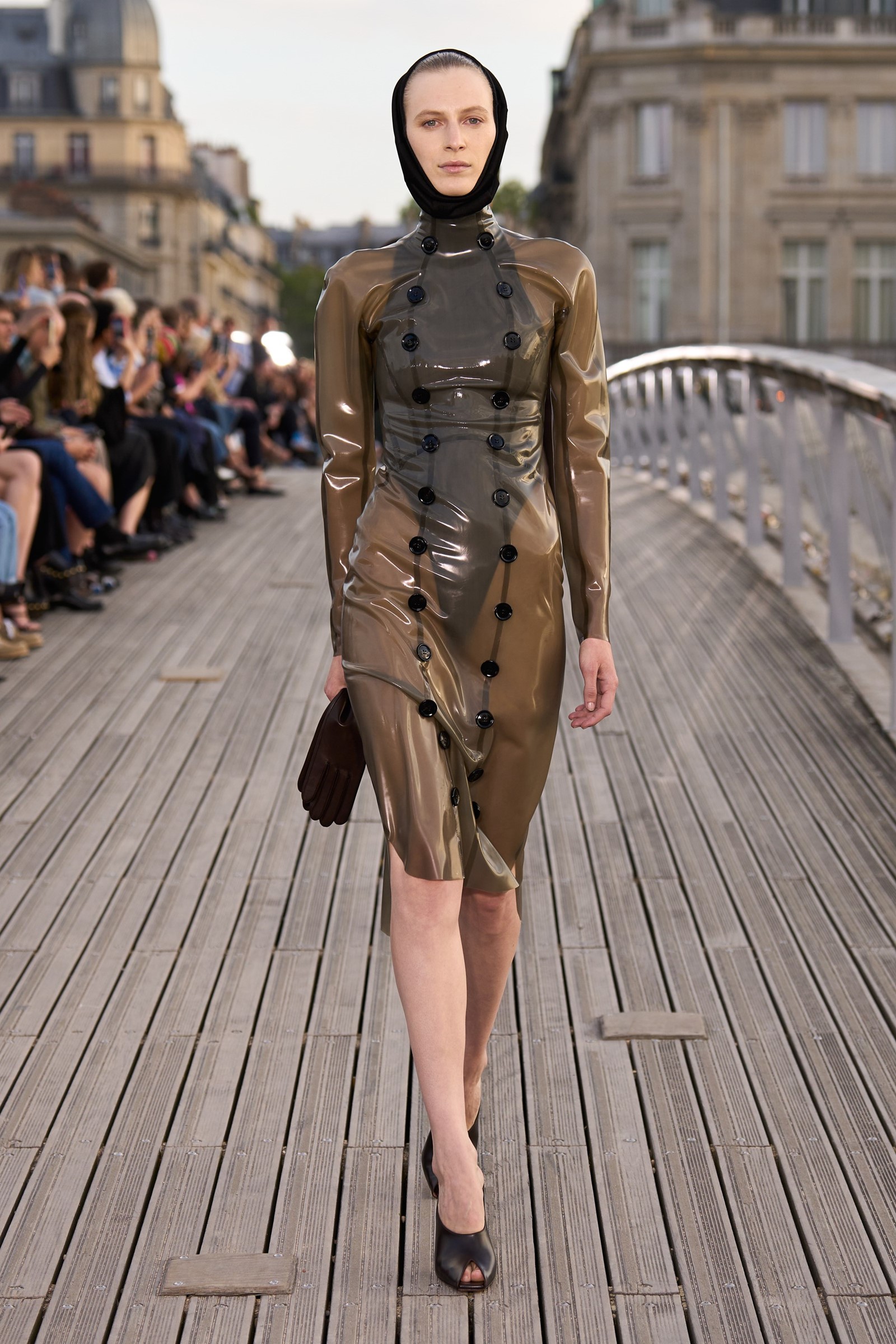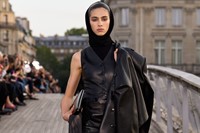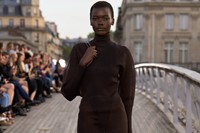Time is a concept that has deep roots at the house of Alaïa – whose namesake, after all, worked to nobody’s schedule bar his own. He habitually showed his collections weeks later than other designers, refusing to kowtow to industry pressure, sure that a loyal cadre of fans and buyers would show up – on time – whenever he called. He also gave his interim collections, the ones other houses dub pre-fall or cruise, the rather more evocative title of ‘intemporel’ – timeless. Pieter Mulier very much continues in the same mould – under his lead, Alaïa continues to show in its own time – albeit, this time, slightly ahead of the pack, unofficially opening couture week a day early, with a line whose craftsmanship, fabrications and innovation consistently blurs the boundaries between couture and ready-to-wear.
Alaïa also eschews seasonal nomenclature for a structure that means their show in July, on a bridge spanning the Seine, was dubbed ‘Winter-Spring’, reflecting when the clothes actually hit the shops. And of course a bridge is about time too – the time to pass between points, maybe hurried or perhaps lingering over some admittedly spectacular Parisian views. There was also a neat synergy in that the bridge Mulier chose – the modernist passerelle Léopold Sédar Senghor – starts around the corner from the first home of the Maison Alaïa in the rue de Bellechasse, where Azzedine staged his legendary first shows. In a roundabout way, it passes from Alaïa’s history to its future, ending on the right bank a few rues away from the new Alaïa boutique in development on the rue du Faubourg Saint-Honoré.


That isn’t just the exploration of an abstract concept: time was of the essence for Mulier, at the centre of his conception of this collection. An emblem, for him, was the button – running lines of them up and around ferocious tailoring, evocative of the notion of fastening and unfastening yourself into the garment. And, perhaps more abstractly, the clothes evoked time – painstakingly constructed, each piece was a testament to the hours taken in its creation. And, exploding the concept of time, Mulier examined archival Alaïa designs and reactivated them for today: contour-seamed jackets, hip-hugging skirts, the curvaceous lines of Alaïa’s signature tailoring, throwing right back to rue de Bellechasse and a vision of a woman then strikingly new that has become, in the interim, a modern classic. Timeless.
So time for Mulier is elastic: he draws from the past – Alaïa’s, but also wider – and reimagines it for the present. Meaning that a sinuously seamed tailored dress with a 1940s feel may be executed not in wool, but rather latex, a material that today holds the same unexpected erotic power as leather did for Alaïa in the 70s and 80s. Indeed, Alaïa’s first collection was in actual fact originally envisaged as a clothing range for the shoe brand Charles Jourdan: they considered Alaïa’s tautly-wrapped leathers too provocative, so ditched the range. Alaïa showed it under his own name, and a legend was born.
Mulier’s own provocation had a timelessness, too – you thought of postwar pin-ups, of the kink purveyed by Malcolm McLaren and Vivienne Westwood in their shop SEX in the 70s (Westwood being a talent Alaïa admired and supported, enormously). The focus on … well, let’s be blunt, the arse, was a direct echo of Alaïa’s own fixations; including a neat nod to a scandalous bathing suit of his early years that was cut so high on the leg it exposed the whole rear. Here, it was worn as a body under semi-sheer skirts. Elsewhere, Mulier worked padding into dresses to contour a new female form divine, the obsession of Alaïa – and, granted, of plenty of artists from antiquity through to Allen Jones, who surely would love this.
It all reminded me of the letter of intent the photographer Terence Donovan wrote to Robert Palmer’s record company in 1986, describing his director’s treatment for the video to Palmer’s forthcoming single Addicted to Love: “I would simply dress a group of international models in Azzedine Alaïa dresses. This designer at the moment produces clothes that make men become quite irrational and women seem to admire him. He understands the linear engineering of a woman's body unlike any other designer.” The same, today, is evidently true of Mulier.






